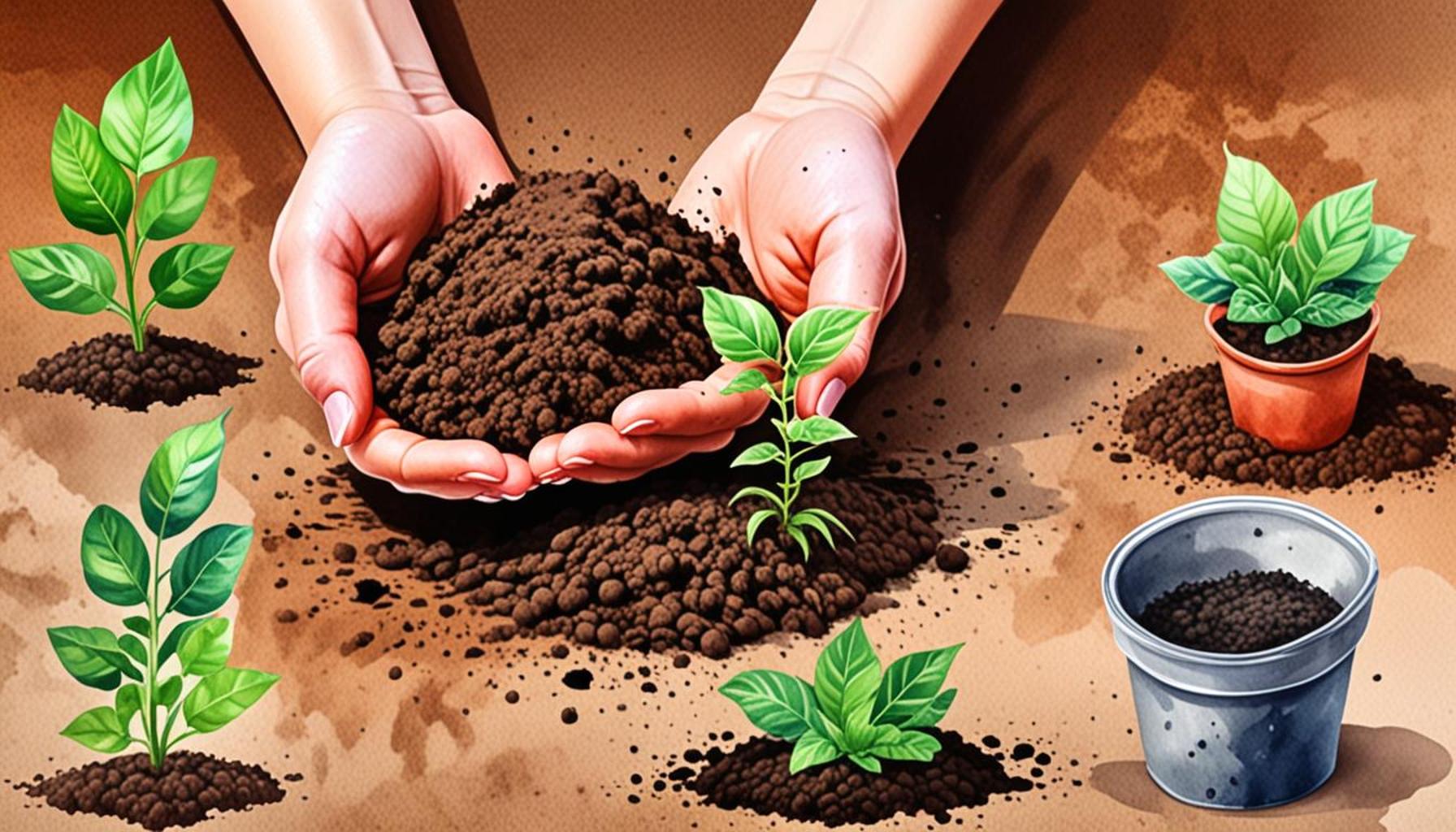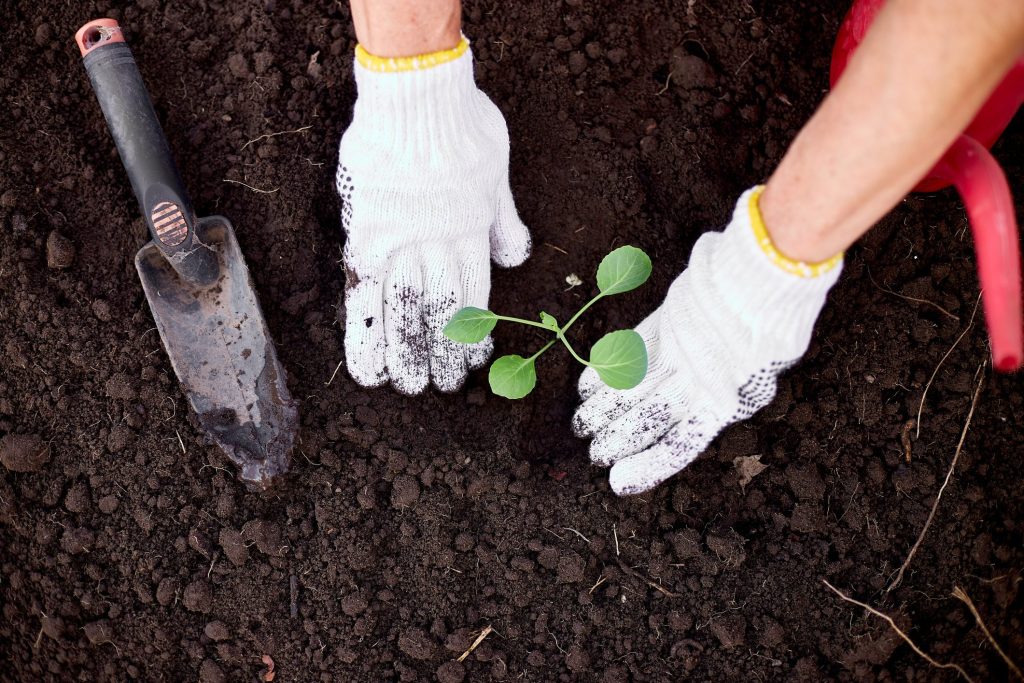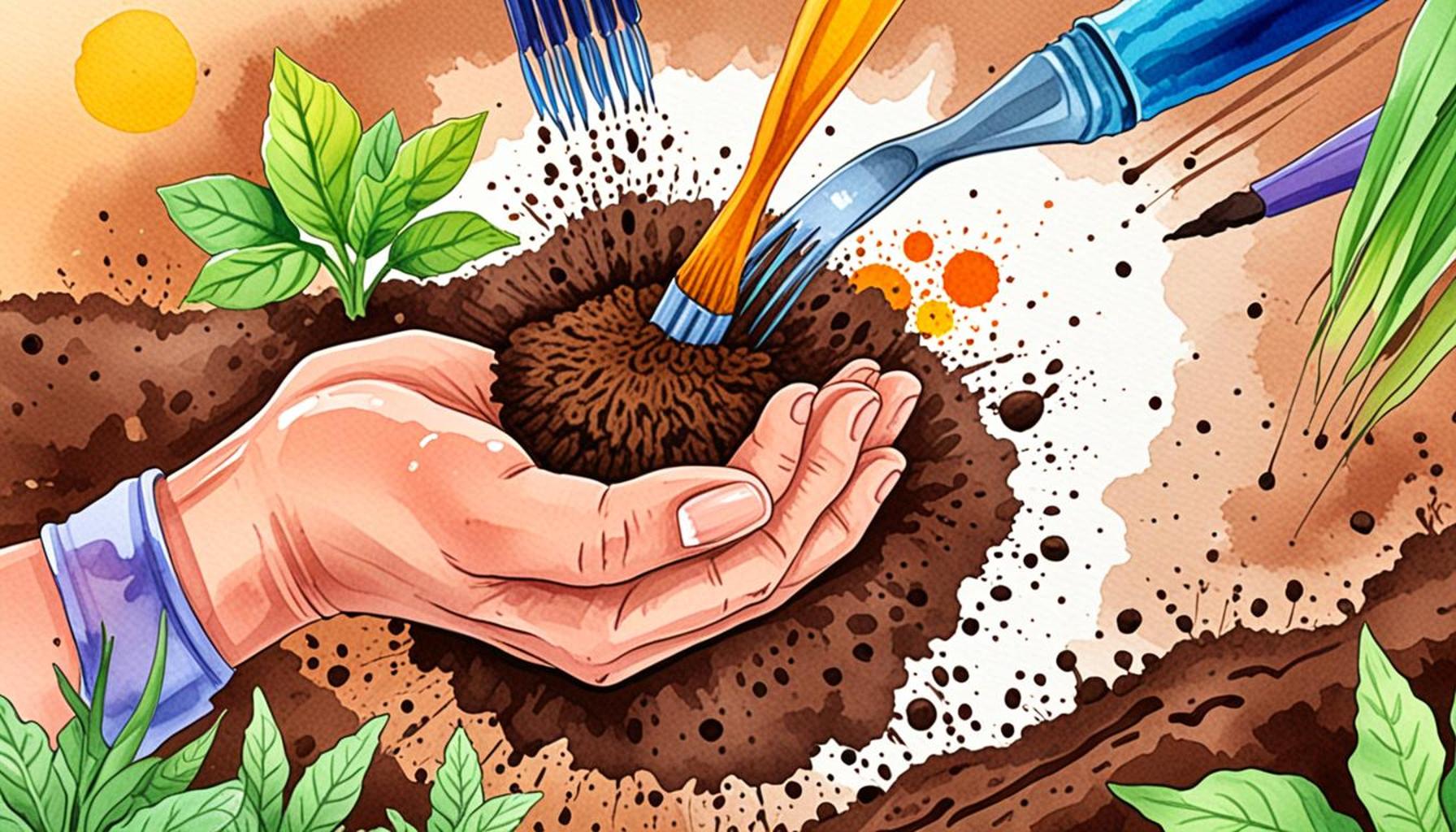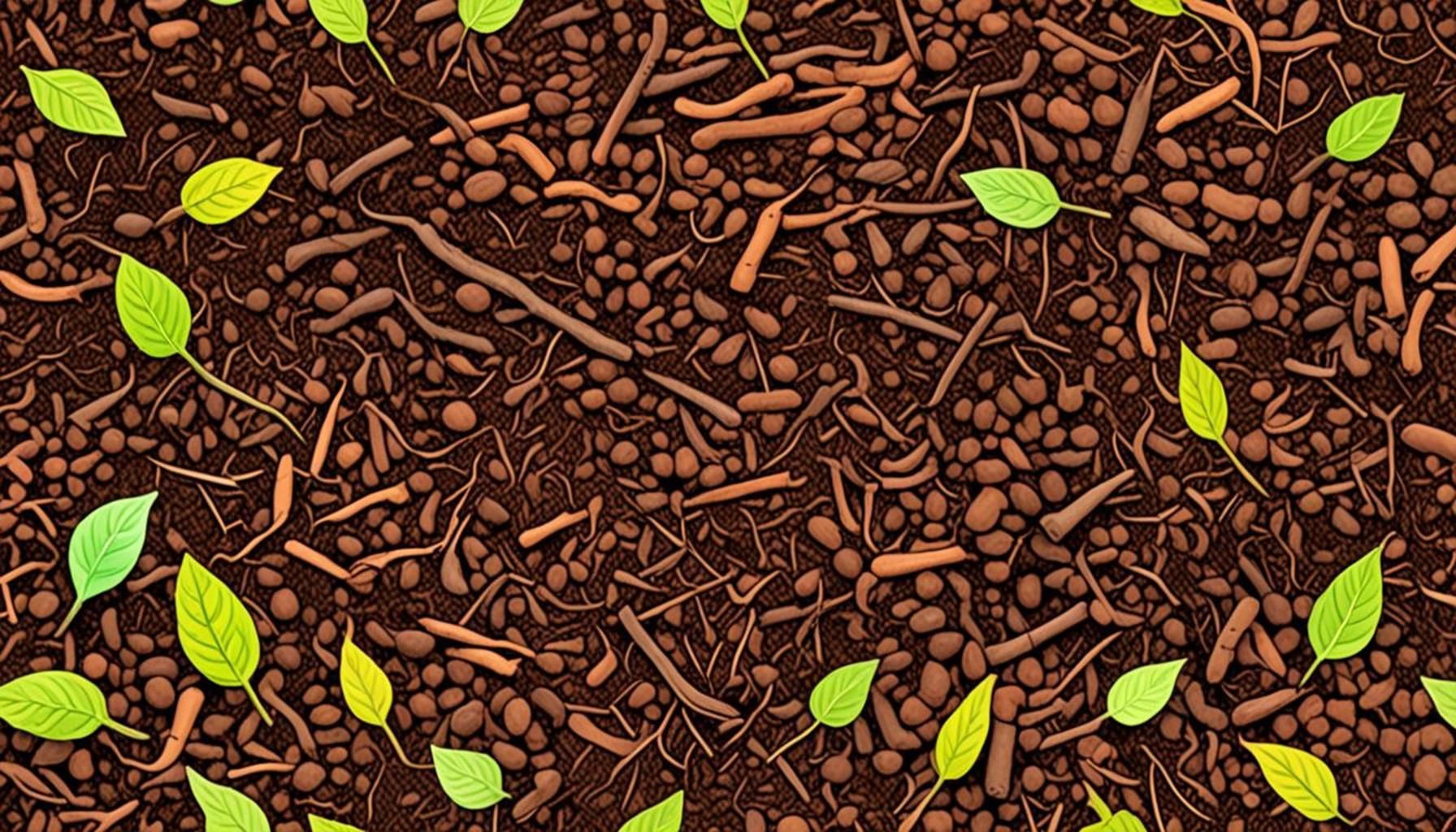How to Amend Your Soil for Healthy Plant Growth: Tips and Techniques

Unlocking the Secrets of Soil Health
Soil is more than just dirt; it’s the foundation of thriving gardens and productive farms. To achieve healthy plant growth, understanding your soil and how to amend it is crucial. Healthy soil is a living ecosystem, teeming with organisms that break down organic matter and create a rich environment for plants to thrive. By enhancing your soil, you can ensure that your plants receive the nutrients they need to flourish, which ultimately translates into bountiful harvests and vibrant landscapes.
Amending soil involves various techniques that can drastically improve its structure and fertility. Here are some things to consider:
- Nutrient Content: A soil test is a valuable first step in assessing and adjusting the levels of essential nutrients like nitrogen, phosphorus, and potassium. For instance, nitrogen promotes leaf growth and is vital for leafy greens such as spinach and kale. Phosphorus supports root and flower development, making it essential for crops like tomatoes or peppers. Potassium helps plants endure stress and disease, which is critical during hot summers.
- Soil Texture: The texture of your soil can affect water retention and drainage. For example, sandy soils drain quickly but may lack nutrients, while clay soils can hold nutrients but may become compacted. By altering the soil’s texture through the addition of compost, which enriches the soil and improves aeration, or sand, which helps with drainage, gardeners can create a balanced soil profile that suits their specific plants.
- pH Levels: The pH level of soil affects nutrient availability. Most plants thrive in slightly acidic to neutral soil (pH 6-7). Testing your soil pH can reveal if it’s too acidic or too alkaline. For instance, blueberries prefer acidic soil (pH 4.5-5.5), while asparagus thrives in more alkaline conditions (pH 7-8). Amending soil with lime raises pH levels, while sulfur can lower it, allowing you to cater to the specific needs of your garden.
Whether you’re nurturing a vegetable patch or a flowering landscape, the right amendments can significantly enhance your soil’s performance. For example, adding organic matter such as well-rotted manure not only boosts nutrient levels but also improves soil texture and moisture retention. Cover crops, like clover or rye, can also enrich the soil when turned under at the end of their growth cycle, thus sequestering nutrients and preventing erosion.
But how do you effectively navigate the process of soil amendment? This article provides practical tips and techniques that cater to various soil types and conditions, making it easier for you to foster a vibrant, healthy garden. As you embark on your soil health journey, consider observing local conditions and leveraging native plants that are well adapted to your area.

Let’s delve into the art of soil amendment and uncover the pathways to sustaining plant health and productivity in your garden. With a commitment to understanding soil health, you can unlock the potential of your gardening endeavors, leading to greater resilience, sustainability, and beauty in your outdoor spaces. Whether you’re a novice or an experienced gardener, the secrets of your soil await discovery!
DISCOVER MORE: Click here for essential tips on soil preparation
Essential Techniques for Soil Amendment
Amending your soil is a fundamental step towards cultivating a thriving garden. This process can be as simple or as complex as your soil’s needs dictate, but understanding some basic techniques will empower you to make informed decisions. Let’s explore effective methods to enhance soil health, with tips that are tailored for various environments across the United States.
The first step in soil amendment is to get a baseline understanding of your soil’s current condition. Conducting a soil test allows you to measure key factors such as nutrient content, pH level, and organic matter percentage. Many local agricultural extension offices offer soil testing services, making this a straightforward endeavor for home gardeners. Once you have these insights, you can tailor your soil amendments accordingly.
Here are some proven techniques for improving soil structure and fertility:
- Incorporate Organic Matter: Adding organic materials like compost, leaf mulch, or well-rotted manure can significantly improve soil texture and bolster nutrient levels. Organic matter not only contributes essential nutrients but also enhances moisture retention and drainage, fostering beneficial microbial activity. Aim for a 3-4 inch layer of organic material on top of your soil and till it in or allow it to decompose naturally.
- Utilize Cover Crops: Cover crops, such as clover, vetch, or rye, are an excellent way to add nutrients and organic matter to the soil. These plants can be sown during the off-season and then tilled back into the soil before planting your main crops. They help prevent erosion, suppress weeds, and improve soil structure, making them a wise investment in maintaining soil health.
- Adjust Soil pH: If your soil test indicates a need for pH adjustment, understand that it’s a crucial aspect of nutrient availability. For example, if your soil is too acidic (below pH 6), you might need to amend it with lime. Conversely, if it’s too alkaline (above pH 7), elemental sulfur may be necessary to bring it down to optimal levels. Regular testing and adjustments can help keep your soil in the ideal pH range for most plants.
- Work Toward Soil Aeration: Compact soil can hinder root growth and water infiltration. To alleviate compaction, aerate your soil by tilling or using tools like a garden fork or aerator. This process creates channels for air and water, promoting healthier root systems and enabling better nutrient absorption.
In addition to these techniques, it’s vital to be aware of any environmental factors that could impact your soil. For instance, certain regions may experience heavy rainfall, resulting in nutrient leaching, while arid areas may suffer from moisture loss. Tailoring your amendments based on your specific environment can yield the best results.
As you embark on your soil amendment journey, remember that patience is key. Developing healthy soil is a gradual process that requires consistent effort and observation. By equipping yourself with knowledge and utilizing effective techniques, you’ll be well on your way to fostering a flourishing garden that yields not just abundant crops but also a healthy soil ecosystem.
Understanding Soil Composition
To effectively amend your soil for healthy plant growth, it’s crucial to understand the composition of your soil. Soil is typically made up of mineral particles, organic matter, water, and air. Each of these components plays a vital role in defining the soil’s properties and its ability to support plant life. For instance, clay retains water but may become compacted, while sandy soil drains quickly but may lack essential nutrients.
Testing Your Soil
A comprehensive soil test should be your first step toward improving soil health. By determining the pH level and nutrient content, you can identify deficiencies that may hinder plant growth. Most soil tests are simple and can be conducted with a home testing kit or through a local agricultural extension office. Understanding your soil’s uniqueness enables you to make informed amendments tailored to its specific needs.
Popular Soil Amendments
There are numerous soil amendments available, each providing distinct benefits. For example, compost introduces beneficial microorganisms and improves soil structure, enhancing its nutrient-holding capability. Gypsum can improve soil drainage in clay soils, while peat moss retains moisture in sandy soils, thus balancing water retention and drainage effectively. Knowing which amendment suits your soil type will lead to flourishing plants.
Fertilization Techniques
Incorporating organic fertilizers such as bone meal or blood meal can enrich your soil with essential nutrients, promoting strong root systems and vibrant plant life. Additionally, applying amendments at the right time—typically during the growing season—maximizes their effectiveness. Regularly replenishing these nutrients ensures your soil remains productive year after year.
Watering and Soil Aeration
In conjunction with amendments, proper watering techniques are crucial. Overwatering can lead to soil compaction and root rot, defeating your amendment efforts. Complement this by aerating your soil, allowing air to reach the roots and improving nutrient absorption. Methods such as tapping and tilling can help achieve optimal soil structure.
| Category | Advantages |
|---|---|
| Soil Testing | Identifies nutrient needs and pH level for effective amendments. |
| Organic Amendments | Enhances soil fertility and structure, fostering healthier plants. |
DISCOVER MORE: Click here to learn how to enhance your soil health
Advanced Soil Amendment Strategies
Once you have a firm grasp of the basic techniques for soil amendment, you might find yourself ready to delve into advanced strategies that can further enhance your soil health. These techniques cater to specific challenges and conditions and can act as a catalyst for producing a flourishing garden.
An area worth exploring is the use of biochar. Biochar is a form of charcoal created by pyrolyzing organic material in a low-oxygen environment, and it can play a vital role in soil amendment. This porous material not only improves soil aeration and drainage but also acts as a carbon sink. By adding biochar to your soil, you enhance its ability to retain nutrients and water, ultimately supporting plant growth while reducing greenhouse gas emissions. Research has indicated that using biochar can lead to improved crop rates, making it a promising addition to any amendment strategy.
Next, consider the role of mycorrhizal fungi in your soil ecosystem. These beneficial fungi establish symbiotic relationships with plant roots, enhancing nutrient uptake—particularly phosphorus, which is crucial for root development and flowering. If you’re planting perennials, incorporating a mycorrhizal inoculant into your soil can set the stage for robust, healthy plants. It’s particularly effective in sandy or nutrient-poor soils, making it a fantastic choice for areas like the Southwestern United States.
Another advanced technique to consider is the use of biodynamic preparations. Brought into popularity by Rudolf Steiner, biodynamic farming incorporates specific herbal and mineral concoctions into the soil to enhance its vitality. For instance, the preparation known as “horn manure” involves fermenting cow manure in a cow horn, which is then buried in the ground. Proponents claim that these preparations can stimulate microbial activity, although scientific research on their efficacy remains ongoing. Even so, experimenting with biodynamic methods might yield surprising results in restoring soil health.
It is also important to recognize the concept of soil layering or “lasagna gardening.” This method involves alternating layers of carbon-rich materials (like straw and leaves) with nitrogen-rich substances (such as kitchen scraps). When carried out properly, layering can create a nutrient-rich and well-aerated environment that mimics natural ecosystems. The gradual decomposition of these layers not only adds organic matter to the soil but improves its structure and fertility over time, making it particularly effective for urban gardens with limited space.
Lastly, don’t overlook the potential of fermented plant extracts as a soil amendment. These solutions, derived from composted plant matter, can provide a boost of nutrients and beneficial microbes directly to the soil. By applying diluted extracts made from beneficial plants such as comfrey or nettles, gardeners can enhance soil health and support microbial communities, thereby fostering a more resilient garden ecosystem.
These advanced techniques highlight the myriad ways in which you can tailor your soil amendments to create the ideal growing conditions for your plants. With experimentation and a commitment to understanding your specific soil needs, you’ll be equipped to navigate the path towards robust plant growth and a thriving landscape.
DISCOVER MORE: Click here for essential tips
Conclusion: Cultivating Soil Health for a Thriving Garden
As we’ve explored, amending your soil is far more than just an initial step in gardening; it’s an ongoing commitment to fostering a healthy and productive environment for your plants. The techniques we discussed, ranging from the basics of composting and mulching to advanced strategies like incorporating biochar and mycorrhizal fungi, provide a comprehensive toolkit for any gardener dedicated to enhancing soil vitality.Each technique serves a unique purpose, addressing specific challenges that your garden may face, and they can lead to a flourishing garden brimming with life.
Understanding the importance of organic matter, nutrient balance, and beneficial microorganisms cannot be overstated. Techniques such as soil layering and the use of fermented plant extracts further exemplify how innovative practices can boost your soil’s health and enhance plant resilience. Additionally, experimenting with less conventional methods like biodynamic preparations could potentially yield remarkable results, adding a unique dimension to your gardening practices.
Ultimately, successful gardening hinges on your soil’s health. By continuously assessing, amending, and nurturing your garden’s soil ecosystem, you not only cultivate better plants but also contribute to a more sustainable and balanced ecosystem overall. As you embark on your soil amendment journey, remember that every garden is unique. Stay curious, be willing to experiment, and your efforts will be rewarded with rich, vibrant growth. Investigate further, connect with local gardening communities, and keep learning. Your garden’s potential is boundless!


